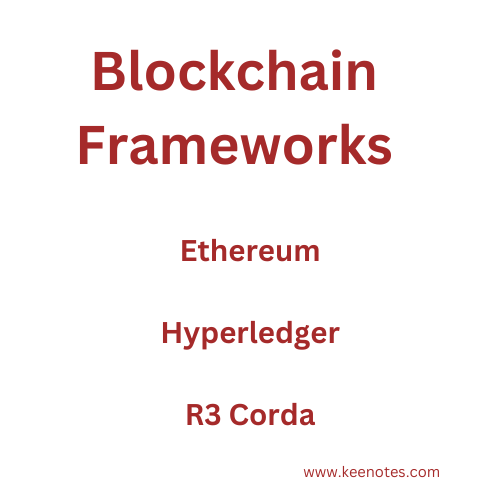
Blockchain Frameworks
After learning about blockchain technology and cryptocurrencies, let’s examine the blockchain framework.
- Blockchain uses a consent method to time stamp and produce distributed ledger records.
- We might need to tailor the visibility of transactions to the various stakeholders based on industry requirements.
Well-known Blockchain Frameworks
Ethereum
Hyperledger
R3 Corda
Ethereum
- Developers may create and deploy decentralised apps using Ethereum, an open source distributed cloud platform.
- The native coin of Ethereum, Ether, operates on a public Blockchain.
- Users may construct smart contracts using code on Ethereum, the first and most widely used smart contract platform.
Smart Contract
A smart contract is software that regulates the transfer of digital assets between parties in accordance with predetermined negotiating guidelines.
Key features:
- Elimination of a third party intervention
- Transactions that are traceable and irreversible
- Self Executing and Self Enforcing
- Governed by Ethereum developers
- Using Proof of Work for mining (POW)
- Approaching consensus at the ledger level
Hyperledger
Introduced by the Linux Foundation, Hyperledger is an open source, modular design geared toward companies looking to use blockchain technology to optimise their processes.
- Platform that is permissioned and modular
- Governed by the Linux Foundation
- various consensus methods at the transaction level
Hyperledger vs. Ethereum
Unlike hyperledger, which provides this flexibility, Ethereum is an open and distributed platform where it is impossible to conceal a transaction from anybody.
R3 Corda
Data distribution in R3 Corda uses a special method in which only real participants may access the data.
- Corda is characterised as Distributed Ledger Technology (DLT).
- The greatest way to use this unique Corda function would be in the financial services sector.
- Platform for specialised permissioned distributed ledgers
- Regulated by R3